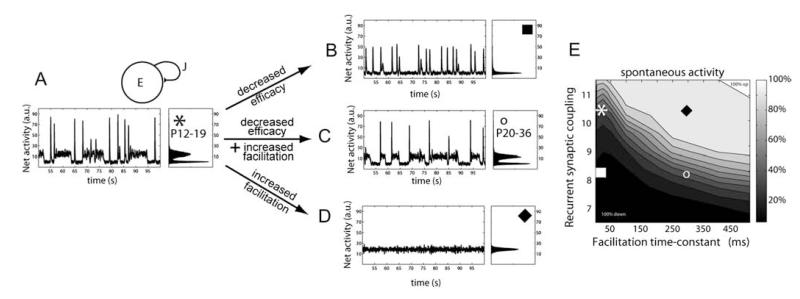Figure 5.
Decreased synaptic efficacy during maturation counterbalances the appearance of short-term facilitation, in a network model of young adult cortex. (A) Above, schematic of the recurrent network model that includes connectivity strength J and synaptic connections that exhibit both short-term depression and facilitation (see Materials and Methods). Below, the adult network displays a dynamic range of activity states for periods of a few seconds with transient high discharges of synchronous firing (left). Histogram of mean network activity illustrates bistable network state interspersed with transient high-firing synchrony (right). (B–D) Decreased efficacy of synaptic transmission or increased facilitation significantly alters the network activity. Co-occurrence of decreased efficacy and increased facilitation in adult networks simulating experimental data from synapses in young adult animals, rescue the dynamic transitions of the network. (E) Map of spontaneous activity revealing relative changes in recurrent synaptic connections against facilitation time constant for 4 different networks, as shown in A–D. Compare to panel E of Figure 4 and note the smaller values for recurrent synaptic coupling.

